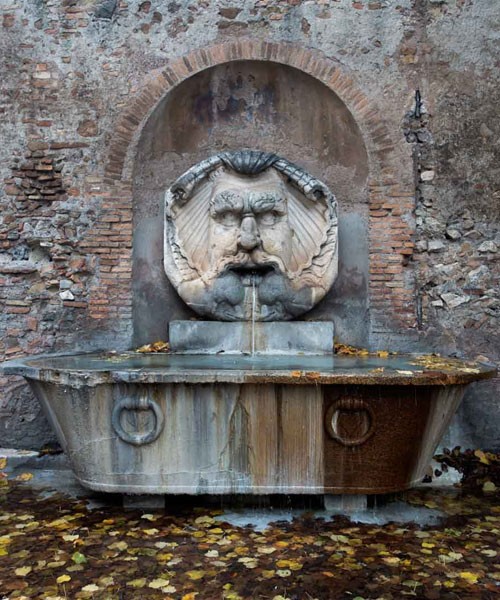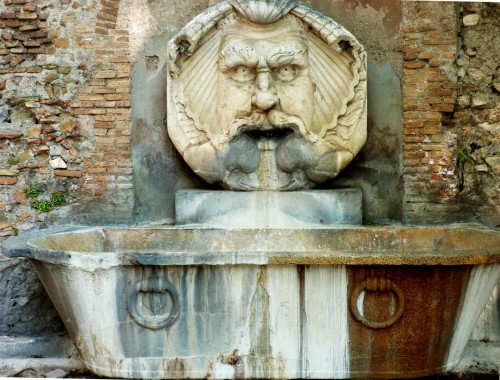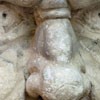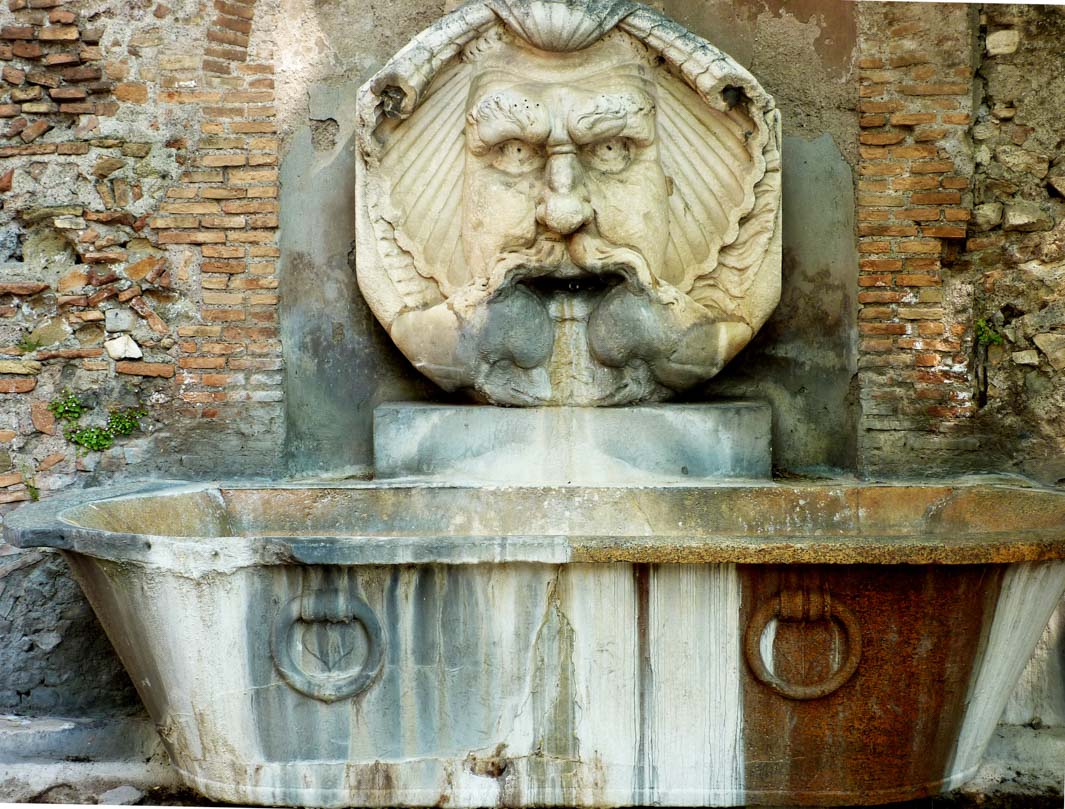It seems, that this fountain protruding out of the wall, depicting a grotesque face with bushy eyebrows, bulbous nose, caved-in eye sockets, and an enormous face, from which a rather scant stream of water trickles into the marble basin-sarcophagus, since old times has constituted an integral part of one of the most romantic places in Rome. Behind the walls to which it is adjacent, stretches the Orange Garden (Parco degli Aranci), located on the Aventine cliff, from where, especially in the evening, there is a beautiful view of the whole city. Then we can see the Tiber winding at our feet in the nightly glow, the illuminated dome of St. Peter’s Basilica in the distance, the building of the Church of St. Cecilia, seen as in if it was in the palm of our hand, and the Altar of the Fatherland, dominant over the whole city and astonishing with its enormity. At times at the old stone gate of the park, there is an elderly man selling roasted chestnuts, while their scent envelopes the area as a balm mingling with the smell of trees and the silhouettes of in-love couples, for whom the park is a favorite meeting place.
It seems, that this fountain protruding out of the wall, depicting a grotesque face with bushy eyebrows, bulbous nose, caved-in eye sockets, and an enormous face, from which a rather scant stream of water trickles into the marble basin-sarcophagus, since old times has constituted an integral part of one of the most romantic places in Rome. Behind the walls to which it is adjacent, stretches the Orange Garden (Parco degli Aranci), located on the Aventine cliff, from where, especially in the evening, there is a beautiful view of the whole city. Then we can see the Tiber winding at our feet in the nightly glow, the illuminated dome of St. Peter’s Basilica in the distance, the building of the Church of St. Cecilia, seen as in if it was in the palm of our hand, and the Altar of the Fatherland, dominant over the whole city and astonishing with its enormity. At times at the old stone gate of the park, there is an elderly man selling roasted chestnuts, while their scent envelopes the area as a balm mingling with the smell of trees and the silhouettes of in-love couples, for whom the park is a favorite meeting place.















